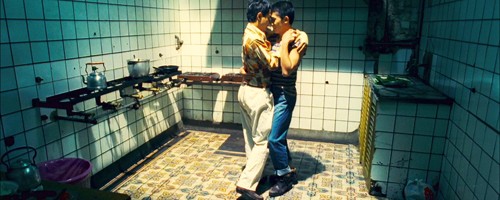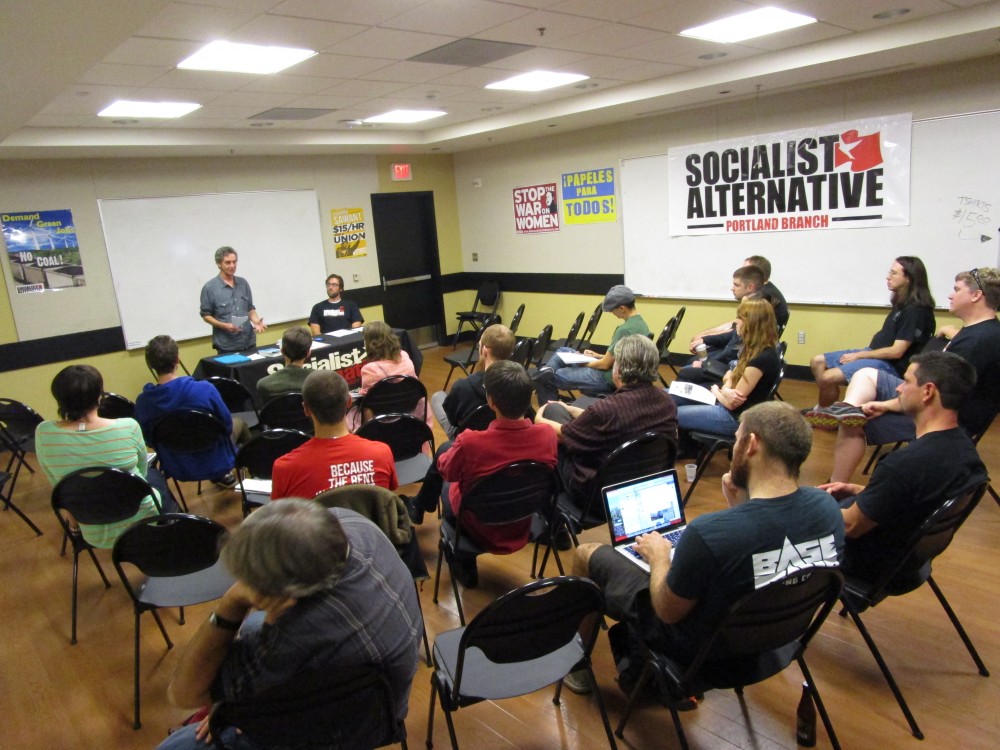For a metropolitan city, Portland seems to be on a mission to go as green as possible—and its arts scene is no exception.
Art eco: It’s not easy ‘going green’

For a metropolitan city, Portland seems to be on a mission to go as green as possible—and its arts scene is no exception.
Artists at Portland State have their own stories to tell about their efforts to “keep it green.” For some it’s about the message, and for others it’s about the materials—or the lack thereof.
To Sara Siestreem, a multimedia artist and PSU Foundation Studio professor, being an eco-friendly artist means recycling her materials and meticulously using every last drop of her art supplies.
“During developmental times, my paintings were all on found wood, and my sculpture is still made with found materials, recycled rather than bought,” Siestreem explained. “Every last particle of paint is used: I’ll cut open tubes and soak them in thinner to use as a wash in the paintings. Old clothes become rags; cans and canisters get a new life in the studio as brush holders.”
Siestreem pointed out the many challenges that artists face while trying to produce environmentally sound pieces, noting the penchant for artists to work with toxic materials such as paint thinners.
“We can sometimes be canaries in a coal mine with some of the material handling we have to do,” she said with a laugh.
Other artists have eschewed materials altogether. Katherine Ball, a Master of Fine Arts student in PSU’s art and social practice program, has been involved a number of projects that focus on activity-and initiative-based (i.e., non-object–based) works of art. For Ball, the artistic process doesn’t need to be focused in the creation of a particular piece; art can be present in action as well.
“I work within movements rather than representing movements,” Ball said. “Rather than making a sculpture that’s about water pollution, for example, I would actively try to do something about water pollution. I work within a movement by having events.”
That is exactly what Ball did during a 2011 residency with the Indianapolis Museum of Art. There, she spent the summer in Indianapolis Island, an inhabitable fiberglass structure floating in the city’s 100 Acres Art and Nature Park Lake. Each year, art students apply to spend their summer in the island domicile, which exists off the power grid.
For her stay, Ball experimented with mushroom-based filters in an effort to impact E. coli contamination in the lake. In addition to her own work on the ecological problems with the water, she also organized a series of public events to raise awareness and prompt action by the community itself.
“The idea of the five public events was to try to pull on people’s heartstrings about ecological issues,” she said. “You can have all the science you want in the world, but it’s never going to get implemented if people don’t truly care and feel connected to the environment.”
Her philosophy shows in her body of work, which has also included a group bike trip across the country to interview various citizens about what they’re doing to reduce their carbon footprint. This group ended up in Washington, D.C., sharing what they’d learned with U.S. Congressmen.
Additionally, she will build a system similar to what she developed in Indianapolis for PSU. Though in all of these works there are a few object-based elements, such as instructional pamphlets or video documentation, Ball views the projects in their entirety as her approach to art.
“Maybe art isn’t about how things look, anymore,” she said. “Maybe art has a totally different mission.”
Siestreem, who works in the material-based arts of painting, sculpture and collage, referred to a certain green quality in what she called “the political gaze” of her work. She pointed to her Native American heritage, which influences the spiritual nature of her art.
“The paintings themselves are abstract landscapes and the goal of the work is to ignite and remind viewers from all cultures of their spiritual relationship to the land,” she said. “I imagine you can see how this relates to the green movement on a deep subliminal and proactive political level.”
Although their methods differ, Siestreem and Ball offer just two examples of the many ways in which artists are approaching the common problem of green artistic practices. Perhaps this variety of approaches will eventually bring a greener perspective to the arts over the long run.
“The thing I really love about art is that it can bring a whole new way of looking at something, yes, but it can also take action on something,” Ball said. “There aren’t many other fields where you can do so much.”





